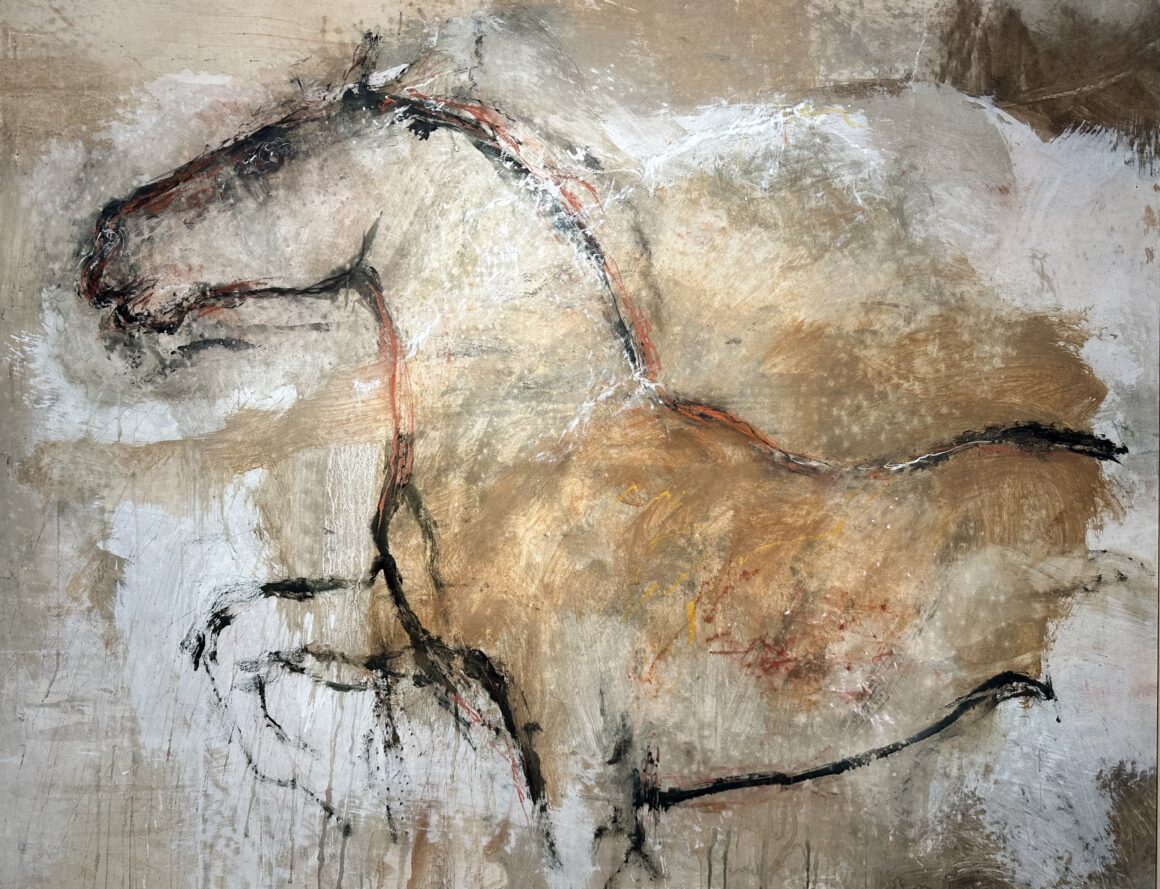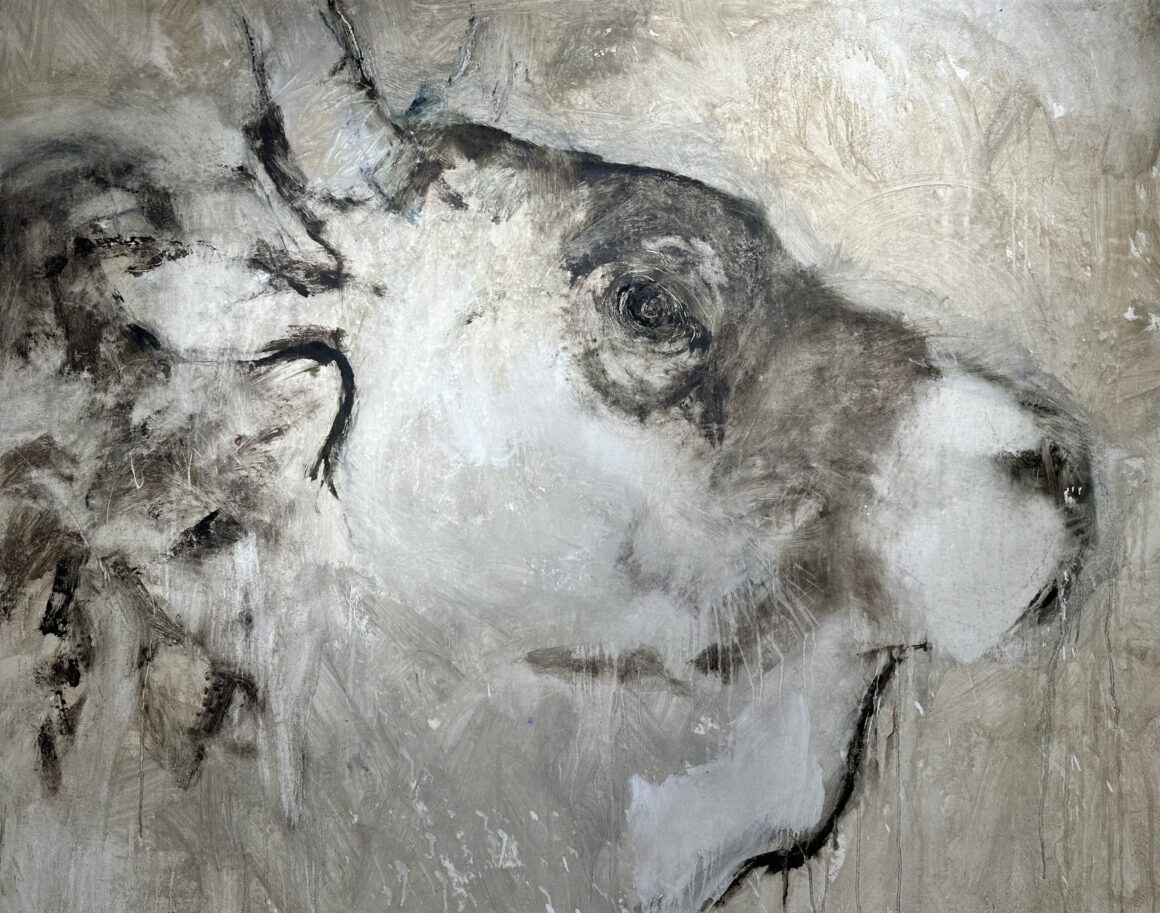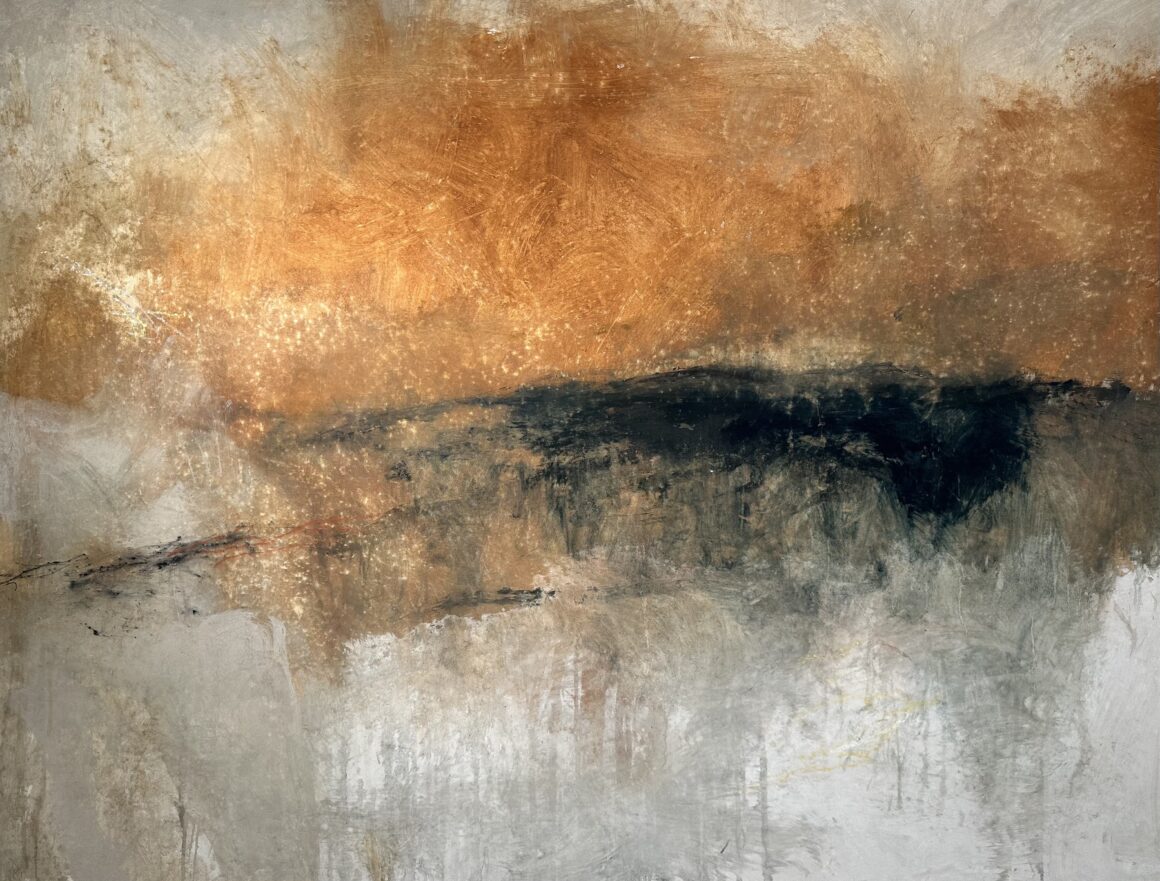Carlo Romiti was born in 1953 in Castelfiorentino, in the municipality of Florence. He graduated from the Academy of Fine Arts in Florence. Since 1987 he has directed the Theater Laboratory of the Visual Arts Center of the Municipality of Certaldo. As part of the Faculty of Magisterium of the University of Florence, he collaborated with a research group on the expressive activities for the production of educational texts. He teaches courses on painting techniques for the Educational Section of the Uffizi and at the Museum of Prehistory in Florence. He engages in pictorial research on the chromaticity of the lands of the place where he lives: a peculiar characteristic of his works. He exhibits in Italy and abroad and lives in a farmhouse in the countryside of Gambassi Terme, between San Gimignano and Volterra, where he has his studio. Carlo Romiti has been painting for years with materials of the earth, of the territory between Volterra and Siena, which he himself collects.
The paint begins when he scrapes an embankment and picks up the first handfuls of earth. Sometimes it is the earth itself, or a different tonality of it, that suggests the work, in an alternation of priorities between subject and color. The raw earth, well dried, hand-milled in stone mortars, sieved and sometimes ground again, is mixed with water, egg or various adhesives, but also with linseed oil, depending on the materials used. The earth treated in this way does not need varnish because it possesses, and will maintain, its own brightness. The continuation of a millenary technique and the continuous study of color and its applications are a source of inspiration, and the use of this ancient pictorial tradition find confirmation in the artist’s environment and in his life choices: a measure of isolation in the countryside between San Gimignano and Volterra.
And it is always here, in the primeval heart of Tuscan nature, that the artist finds, in addition to the raw materials with which to paint, the subjects to portray: land, seascapes, woods, and their animal inhabitants. Thus, the ancient stable, which Romiti today uses as a studio, is once again filled with horses, bulls, dogs, wild boars and other animals in which he admires archaic nature, intuitive knowledge, and atavistic energy, representing them with terse and essential lines that reveal all the immediacy and genuineness of his artistic gesture. Carlo Romiti escapes from civilization to enter a kingdom that precedes and infuses it: the homogeneous kingdom of nature, in which man is animal, animal mixes with earth, earth fades into vegetation and vegetation plunges into water, in an amorphous whole that speaks of another time that is also now, of forgotten habits and origins that are nevertheless ours.
Carlo Romiti è nato nel 1953 a Castelfiorentino (Fi), si è diplomato all’Accademia di Belle Arti di Firenze. Dal 1987 dirige il Laboratorio Teatrale del Centro Arti Visive del Comune di Certaldo (Fi). Ha collaborato con un gruppo di ricerca sulle attività espressive della Facoltà di Magistero dell’Università di Firenze per la realizzazione di testi didattici. Tiene corsi sulle tecniche pittoriche per la Sezione Didattica degli Uffizi e al Museo di Preistoria di Firenze. Conduce una ricerca pittorica sulla cromaticità delle terre del luogo dove vive: caratteristica peculiare delle sue opere.
Romiti vive nella campagna tra San Gimignano e Volterra, dove la “terra” locale fornisce il materiale per le sue straordinarie opere contemporanee. La pittura ha inizio nel momento stesso in cui raschia un argine e, con la mano, raccoglie le prime manciate di terra. Talvolta è la terra stessa, o una sua diversa tonalità, a suggerire l’opera, in un alternarsi di priorità tra soggetto e colore La terra grezza, ben asciugata, macinata a mano in mortai di pietra, setacciata e talvolta macinata ancora, viene mescolata con acqua, uovo o collanti vari, ma anche con olio di lino a seconda dei supporti usati. La terra così trattata non ha bisogno di vernici finali poiché essa possiede e deve mantenere la sua propria luminosità.
Ed è sempre nel cuore primigenio della natura toscana che l’artista trova anche i soggetti da ritrarre: terre, marine, boschi, e i loro abitanti animali. Romiti si sottrae alla civiltà per addentrarsi in un regno che la precede e la infonde: quello omogeneo della natura, nel quale l’uomo è animale, l’animale si mescola alla terra, la terra sfuma nella vegetazione e la vegetazione s’immerge nell’acqua, in un tutto indistinto che parla delle nostre origini.
Carlo Romiti I An endless dialogue with his earths and territory.
Painting by its nature is a mental gesture. The tension towards beauty and its exploration through the artwork are expressed by a gesture subordinated to the dictates of the mind, capable of intuiting the physiognomy of a place. The hand acts as an extension of creative thinking by means of the raw earth.
Carlo Romiti I Un continuo dialogo con le sue terre.
La pittura per sua natura è un gesto mentale. La tensione verso la bellezza e la sua esplorazione mediante l’opera si esplicano grazie ad una gestualità subordinata ai dettami della mente, capace di intuire la fisionomia di un luogo. La mano agisce come estensione del pensiero creativo per mezzo della terra grezza.
Carlo Romiti’s paintings currently on display in the gallery:

Richiamo - 110h x 157w cm 
Arabo - 148h x 115w cm 
Testa di Cavallo con le Ombre - 100h x 152w cm 
Bizza - 153h x 128w cm 
Ginnetto - 87h x 55,5w cm 
Vegliantino - 115h x 148w cm 
Cavallo Turco - 86h x 132w cm 
Ulisse - 164h x 208w cm 
Sonno Estivo - 78h x 130w cm 
Cielo con alabastro - 101h x 152w cm 
Pietracassa - 147h x 191w cm 
Tatti - 155h x 250w cm 
Burrasca - 56h x 167w cm 
Paesaggio con le nebbie - 122h x 55w cm 
Cambio di Stagione - 153h x 54w cm 
Egola - 121h x 55w cm 
Montepescini - 146h x 115w cm 
Scoglio - 137h x 118w cm 
Paesaggio Rosso - 135h x 106w cm 
Vaianino - 47h x 114,5w cm 
Riflesso - 109h x 126w cm 
Poggio di Lecci - 83h x 137w cm 
Rovescio - 102h x 130w cm
For details about artist and available artworks send us a request:






